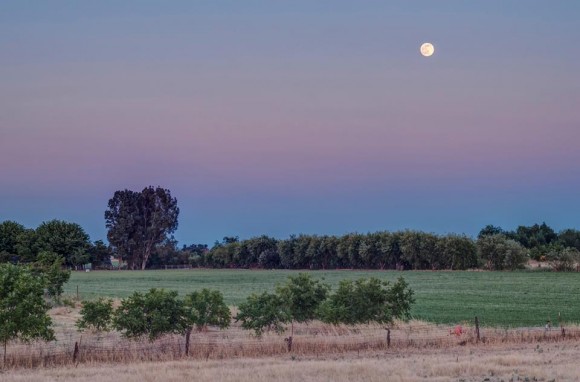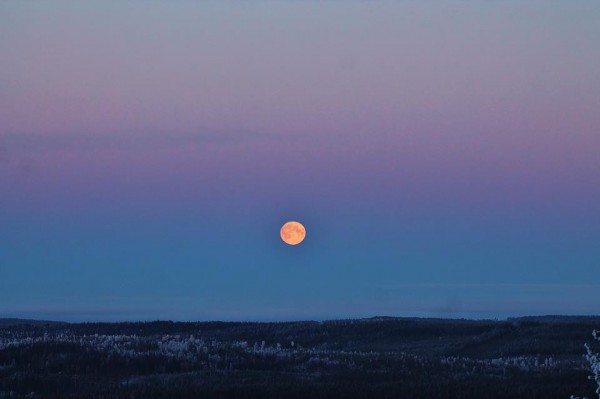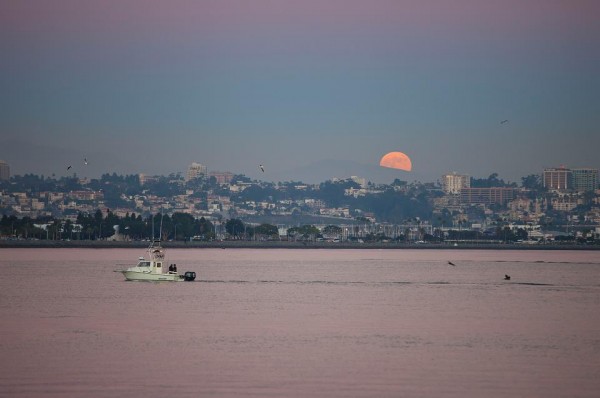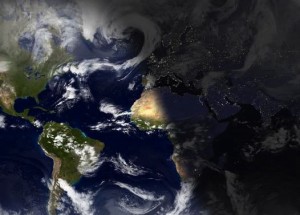During last night’s total eclipse of the moon, Earth’s shadow brushed the moon’s face. The eclipse is over, but, just like you or me, Earth still casts a shadow. Earth’s shadow always extends into space, in the direction opposite the sun. There are several good times to think about and be aware of Earth’s shadow. Follow the links below to learn more:
See Earth’s shadow any evening, ascending in the east
See Earth’s shadow during an eclipse of the moon

Alexander Kozik in California caught Earth’s shadow – that deep deep blue-grey line of darkness, just above the horizon – as the almost-full moon rose on June 1, 2015.

Earth’s shadow, with full moon. Photo from EarthSky Facebook friend Birgit Boden in northern Sweden.

Earth’s shadow and full moon from EarthSky Facebook friend Cattleya Flores Viray in San Diego.
See Earth’s shadow any evening, ascending in the east. You can see Earth’s shadow any clear evening ascending in the eastern sky. The shadow is a deep blue-grey, and it’s darker than the blue of the twilight sky. The pink band above the shadow is called the Belt of Venus.
Notice: Earth’s shadow ascends in the east at the same rate that the sun is setting below the western horizon
The shadow of the Earth is big. You might have to turn your head to see the whole thing. And, just so you’ll recognize it more easily, remember that the shadow is curved, in just the same way that the whole Earth is curved.

Earth’s shadow on the moon. April 14, 2014 eclipse of the moon by eclipse master Fred Espenak.
See Earth’s shadow during an eclipse of the moon. Earth’s shadow extends into space so far that it can touch the moon. That’s what a lunar eclipse is. It’s the moon within Earth’s shadow.
When the sun, the Earth and the moon are aligned in space (nearly or perfectly), with the Earth in between the sun and moon, then Earth’s shadow falls on the moon’s face. Then people on Earth see the shadow gradually turn a bright full moon dark in an eclipse of the moon.
As seen from Earth’s surface, there are typically two or more lunar eclipses every year. Some are total, some are partial, some are a subtle kind of eclipse known as penumbral.
During a lunar eclipse, a very small amount of light from the sun filters through Earth’s atmosphere onto Earth’s shadow on the moon. It’s why – at the middle part of a total lunar eclipse – the shadow on the moon looks reddish.

Night is a shadow. Global view of Earth at night is a composite assembled from data acquired by the Suomi National Polar-orbiting Partnership (Suomi NPP) satellite over nine days in April 2012 and thirteen days in October 2012. Image via NASA.

Night falls when the part of Earth you’re standing on enters Earth’s shadow. Click here to expand this image. Image via NASA
Night is a shadow. The fact is that night on Earth or any other world is a shadow. When night falls, you’re standing within the shadow of Earth.
Bottom line: Check out Earth’s shadow. You might see it as an ascending line of darkness in the east just after sunset. Or you might see it brushing the moon’s face during a lunar eclipse. Or think about night as a shadow, when you’re standing outside in darkness after sunset … maybe tonight.
